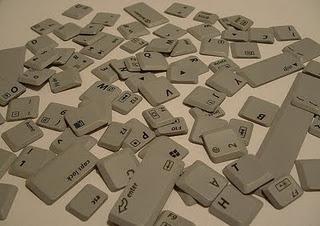 "Aocdrndicg to rscheearch at cmabrigde uinervtisy, it dseno't mtarte waht oerdr the ltteres in a wrod are, the olny iproamtnt tihng is taht the frsit and lsat lteetr be in the rghit pclae. Tihs is bcuseae the huamn mnid deos not raed ervey lteter by istelf, but the wrod as a wlohe."
"Aocdrndicg to rscheearch at cmabrigde uinervtisy, it dseno't mtarte waht oerdr the ltteres in a wrod are, the olny iproamtnt tihng is taht the frsit and lsat lteetr be in the rghit pclae. Tihs is bcuseae the huamn mnid deos not raed ervey lteter by istelf, but the wrod as a wlohe."This little bit was posted all over Facebook Walls earlier this month, making a comeback after its original online circulation in September 2003.
The message was that this is good news for dyslexics and bad spellers everywhere. Because, even if the letters of words are scrambled or misspelled, the mind can recognize the words as long as the first and last letter are in the correct place.
Of course, as writers, this fact doesn't make a fig of a difference to editors, agents, publishers, proofreaders, and readers, but it's an interesting look into how the brain works.
Being dyslexic myself, I found it interesting that I can actually read the scrambled words with a tad more speed and ease than the unscrambled versions.
This article makes an interesting point. The letters are not scrambled willy-nilly but carefully placed so that each letter is as close as possible to its correct position. "Aocdrndicg to rscheearch at cmabrigde uinervtisy" is far easier to read than "Anidroccg to rcraeseh at Cgdirbmae utisreviny."
Though the reason for the brain being able to read the above paragraph remains unanswered, argument is that the placement of the letters and the shape of the words have nothing to do with how we read.
Not really sure how this so-called urban myth started or what linguists are going to do with the phenomenon, but is sure is an interesting demonstration of how the brain works.
Image: JunCTionS, Flickr
© 2011 Tiffany Jansen, writer

